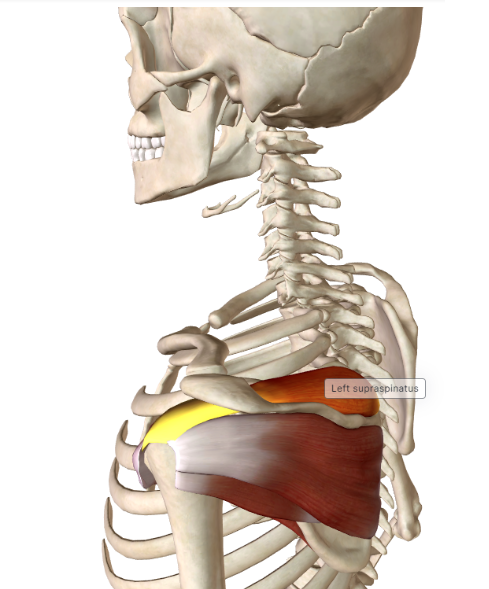Frozen Shoulder

Best treatment for frozen shoulder.
There are several options to effectively management frozen shoulder. The best physiotherapy treatment involves a combination of shoulder joint stretching which is facilitated by the physiotherapist, known as passive glenohumeral joint mobilisation, along with home exercises to further promote mobility of the shoulder. Shoulder strengthening exercises should also be completed to ensure you start to utilise the extra range your shoulder achieves.
Medical management can be combined with physiotherapy in the form of a hydrodilatation which is an injection of saline and corticosteroid into the shoulder joint. This can provide significant improvements in a pain and range. Your physiotherapist will be able to provide you with the best information as to when you should go for this.
For persistent forms of frozen shoulder, a manipulation under anaesthetic may be considered or a ‘capsular release’ arthroscopy may be performed. These surgical procedures are utilised in cases when conservative forms of management are less successful.
Click here to view our self-assessment tool to see if you need to get your shoulder assessed.
Best exercises for frozen shoulder.
When you have any form of shoulder injury or have undergone surgery it is important you complete appropriate rehabilitation to ensure you do not develop frozen shoulder secondary to these. The rehabilitation will vary for each condition so discuss with your Physica physiotherapist the best course of action. At times frozen shoulder can occur with no known cause making it difficult to prevent entirely.
Exercises to assist you once you do have frozen shoulder incorporate stretching of the shoulder joint in multiple directions. Often these stretches will start by looking to stretch your arm overhead with you arm directly in front of you. Stretches with your arm out to the side are then incorporated and then motions involving placing your hand behind your back are utilised.
Often these stretches can result in short term soreness however it is important to continue gradually stretching the shoulder more and more.
Watch some of these exercises in the video below!
What is Frozen Shoulder?
Frozen shoulder is a condition characterised by progressive stiffness and pain of the shoulder joint. This is due to a progressive contracture of the capsule that surrounds the shoulder and typically provides a large space for the shoulder to
move. There are typically three phases of the condition.
Phase 1 is ‘freezing’ where there is worsening pain and stiffness of the shoulder. Phase 2 is ‘plateau’ where the pain usually decreases but the stiffness remains. Phase 3 is ‘thawing’ where the shoulder range of movement improves.
The condition on average can last between 9 and 18 months, however certain cases may have faster or slower recovery. Your Physica physiotherapist will be able to assist you to diagnosis which phase your shoulder may be in and to provide you with the most appropriate management for this phase.
How do I know if I have Frozen Shoulder?
You will notice a gradual and progressive onset of pain and stiffness of the shoulder. The pain is typically poorly localised around the shoulder and upper arm and feels like a deep ache. Some radiation further down the upper arm may be experienced. You typically will not have any pins and needles or tingling of the arm.
The most painful and stiff motion of the shoulder will be external rotation (rotating the arm out) followed by lifting the arm out the side and then reaching overhead in a forward direction.
This means you will start to notice an inability to reach overhead as high as normal and difficulty rotating the arm such
as reaching behind you.
What causes Frozen Shoulder?
Frozen shoulder typically occurs insidiously meaning there is no specific mechanism that causes the condition.
There are some associated risk factors that can increase the likelihood of developing frozen shoulder including diabetes (type I or II), thyroid disorders, a prolonged period of immobilisation (such as after shoulder surgery) or a recent injury to the shoulder.
The peak age for developing frozen shoulder is mid-50s with women more likely to develop it. Once resolved the re-occurrence of frozen shoulder on the same side is unusual.
How do I diagnose Frozen Shoulder?
Frozen shoulder can typically be easily diagnosed with physiotherapy assessment. Symptoms that should be present for a diagnosis include restriction in all passive and active shoulder movements, with rotation of the arm outwards the most limited.
Pain and stiffness should increase and be reproduced at the
highest range of motion possible. Typically pain at night and an inability to lie on the affected shoulder is also present.
To provide further confidence in the diagnosis an X-ray of the shoulder may be utilised to rule out other possible conditions such as arthritis of the shoulder. An ultrasound or MRI can be performed to confirm additional structural changes that occur with frozen shoulder and to assess for any other possible conditions.
Related Shoulder Pain Blogs

How to sleep with a sore shoulder - link here
Why is my shoulder pain not going away - link here
How do you know it's serious - link here
Is exercise good for my pain? - link here
Should I stretch? - link here
